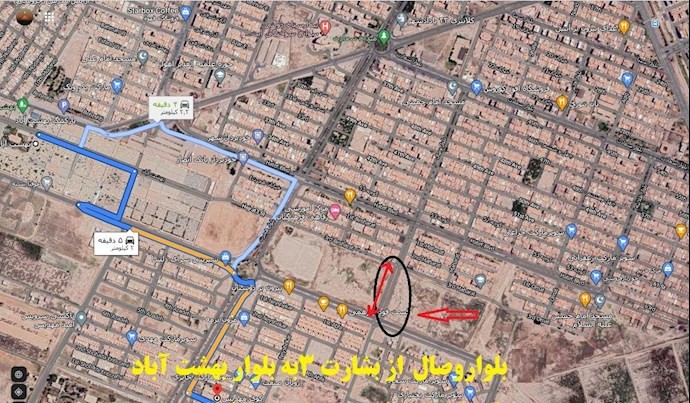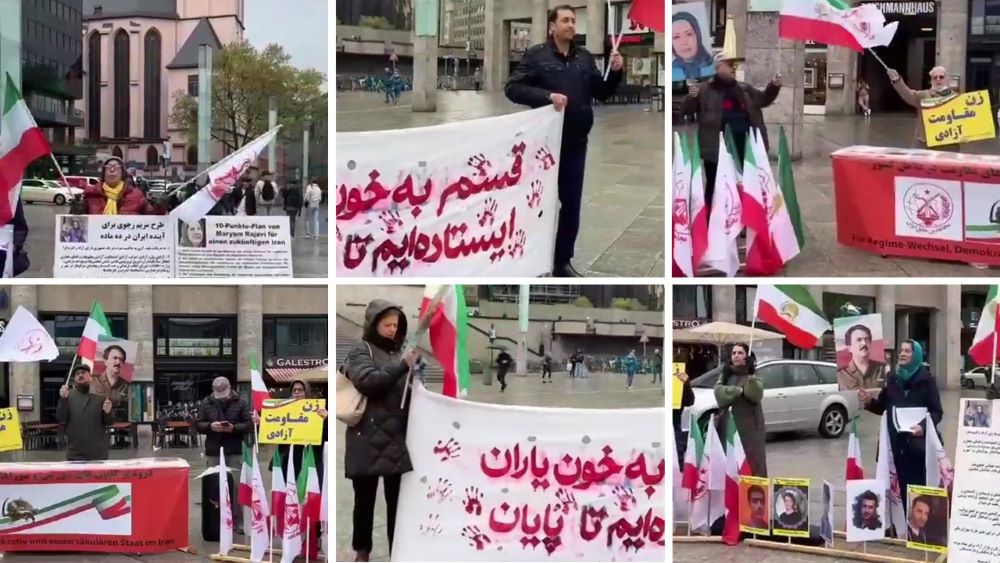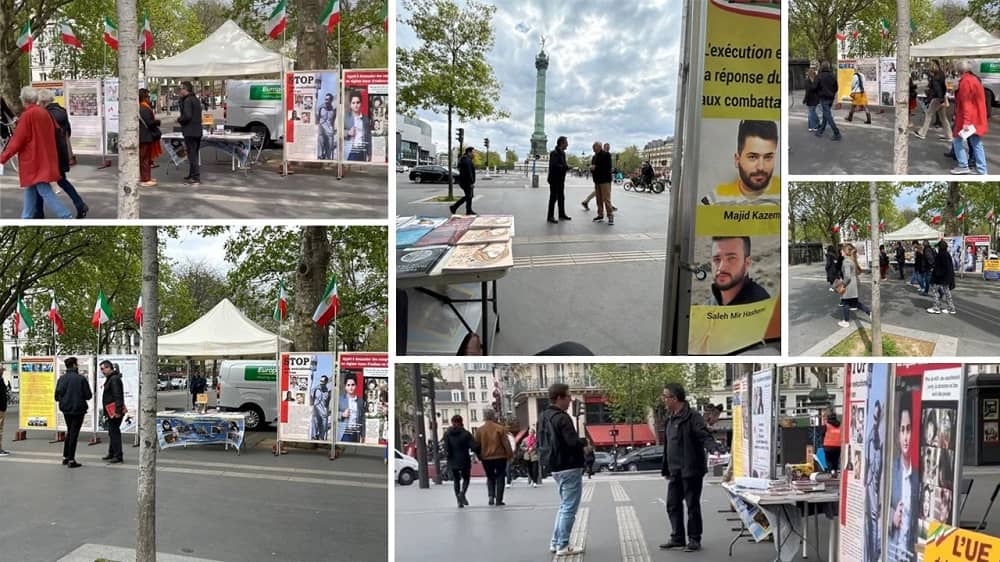In an anti-human act, the Mullah’s criminal regime destroyed the tomb of the 1988 massacre victims in Khavaran, Ahvaz, which was in the form of mass graves, to erase the traces of a great crime against humanity by building a boulevard on it.
This boulevard, which connects Besharat Street to Beheshtabad Boulevard and Mahdis neighborhood, will lead to the destruction of the massacred Mojahedin’s graves in Ahvaz between Mahdis and Phase 5 of Padadshahr.

A documentary report on the demolition and construction of the boulevard in the Khavaran area of Ahvaz — September 8, 2020:
Supporters of the People’s Mojahedin Organization of Iran ( MEK/PMOI) in Khuzestan wanted to document the crime, following the destruction of the Khavaran in Ahvaz by the evil Mullahs regime. After three days of investigating the Khavaran mass grave condition in Ahvaz, a truck driver (one of the citizens) who lived near the cemeteries was asked, “Was there a cemetery here?” In response, he says yes, this place was the tomb of the Mojahedin e Khalq, but the regime has built a road on it. This compatriot driver also wanted to accompany us to help more and told us to take care of yourself! I am ready to come with you and show you. And he remembered the Mojahedin’s name with courage and boldness.
The MEK supporters checked the area thoroughly by a car several times, and in fact, they traveled a long way to reach the desired location for a week.
In fact, under the pretext of constructing the boulevard between Mahdis and Phase 5 of Padadshahr, the regime destroyed the tombs of Khavaran on both sides of this boulevard. This boulevard connects Besharat Street to Beheshtabad Boulevard and Mahdis neighborhood.
Background of “Khavaran” of Ahvaz:
The “Khavarans” are areas where many political prisoners executed by the Mullahs’ dictatorship are buried between 1981 and 1988. In all parts of Iran, such areas are found that have common points like the desolation, lack of names and symbols, the absence of stones and tombs, and in some cases, the existence of mass graves in them.
The “Khavarans” are angered by the government, so much so that over the past three decades, the slightest traces of them have been destroyed, sometimes the effects of gunfire have been seen on some graves, and in some cases, the Iranian regime has changed the use of these areas. The “Khavarans” is a prominent document of a crime against humanity, a crime committed under the government’s direction and government officials in Iran.
In late July 2018, the mullahs’ inhumane regime destroyed the 1988 massacre graves and wiped out traces of crimes against humanity and mass burial mounds of MEK prisoners in Ahvaz.
In 1988, dozens of MEK political prisoners buried men and women in mass graves in the Padadshahr area during the political prisoners’ massacre.
The mass graves of Ahvaz were two large cemented rectangular and square pieces located in the Padadshahr area. The image of Bagheri’s father sitting on the mass grave of his loved ones will be a reminder of this lasting Mullahs’ crime against humanity. Bagheri’s father, who was the father of the Mojahedin martyrs, Zahra and Ali Bagheri, had made this cement symbol himself, and every year he paid tribute to his children on these tombs.
These tombs have always been disrespected and hidden by the inhuman regime of the mullahs. For more than a decade, the area was covered with rubbish and construction debris to obliterate it from public view, making it difficult for families to access.
The families themselves placed small stones on this mass grave and wrote their loved ones’ names on them.
In May 2017, the Ahvaz Khavaran shrine’s demolition was key as part of a road-widening operation but was halted after families and the Iranian resistance exposed concerns about the possible destruction of mass graves.
In July 2017, the families were told that a highway was to be crossed and promised that the graves would not be damaged and would remain in a green space!
But in late July 2017, the entire area where the mass graves of political prisoners had previously been executed was razed to the ground using an excavator.
The operation to remove all the relics and stones left by the families took less than 24 hours.
Phase 5 of Padadshahr, a place between Mahdis and Phase 5 of Padadshahr and a 21-hectare park where a highway should be built.
From the beginning of 1981, when executions of members of political groups opposed to the mullahs’ rule began in Ahvaz, as in other cities, the Iranian regime buried them in graves near the Ahvaz Public Cemetery called Beheshtabad.
Beheshtabad Cemetery, located on Ahvaz’s southeastern side, was almost out-of-town in 1981, and adjacent to it was the Seifi Gardens and the city’s old grove, as well as a slum called Khorusi.
The first groups of political prisoners executed or killed in 1981 by the Iranian government were buried approximately 3 km east of Beheshtabad, parallel to the Foolad Forest Park road. In subsequent years, other executions, including those executed in Ahvaz’s 1988 massacre, were generally buried there, specified in satellite images of these areas.
In this regard, in 1996, the Union of Housing Cooperatives of Khuzestan Province began to prepare the land around this area for construction, which had less than 40% progress.
In 1997, the then-mayor of Ahvaz, “Abbas Holakouee,” who had a history of membership in security institutions, planned to turn this cemetery into a green space! However, the project was virtually abandoned after three years because the area’s soil was too unsuitable and difficult to access.
In 2001, the Ahvaz Housing and Urban Development Organization started designing and planning new urban plans for construction. But, since the Housing and Urban Development Organization could not reach an agreement with the owners of these properties, who already had documents, this plan was also abandoned.
In addition to all the efforts made to destroy this place, Ahvaz Municipality emptied all construction debris in this anonymous cemetery, making it more challenging to access these tombs and its existential monuments destroyed. Especially in the two seasons of autumn and winter, when it rains a lot and the surface water has no way out, the situation worsens so much that about six months of the year, water collects in half of the high cement tombs and causes them to settle and be further destroyed.
Until the end of July 2018, under the pretext of constructing a boulevard, the entire area where the mass graves of political prisoners had previously been executed was razed to the ground using an excavator.
Although these mass graves of the tombs of the Mojahedin and militant martyrs of the Iranian people have been destroyed and leveled after two years, these crime documents can never be erased from the historical memory of the Iranian people. We neither forgive nor forget.





